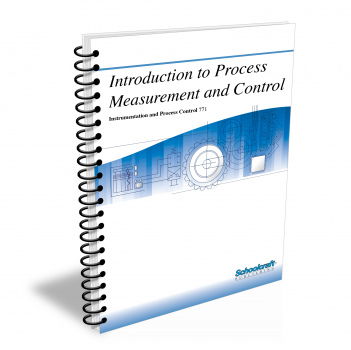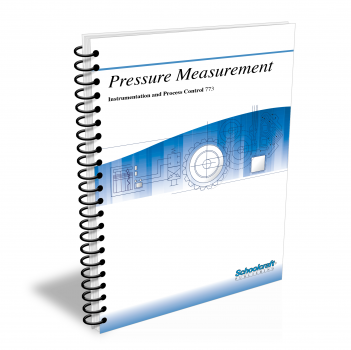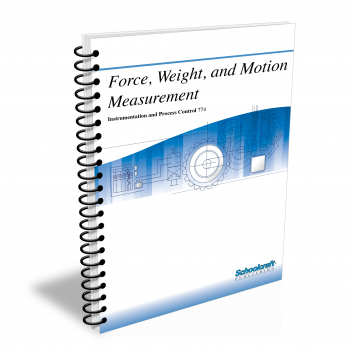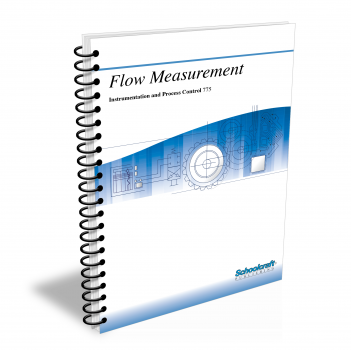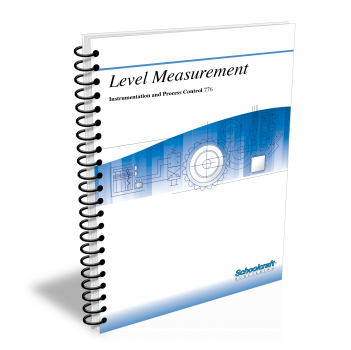Temperature Measurement
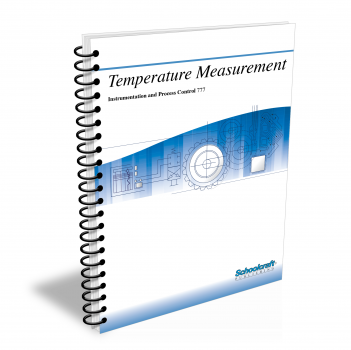
Course Number: 777
The Temperature Measurement textbook defines terms and units in thermal measurement and describes the operation of RTDs, wheatstone bridges, thermistors, thermocouples, and several kinds of thermometers. It explains the principles of pyrometry and the operation of narrowband, broadband, and bandpass pyrometers. It concludes with a lesson on calibration standards and typical methods for calibrating and testing many kinds of temperature-measuring instruments.
Does your curriculum require additional topics not included in this textbook? Build a customized version of the Temperature Measurement textbook below.
This textbook has been recently updated
to include topics lists, objectives, & key terms for every chapter.
Recommended Contact Hours – 8
Preview a Chapter
Available Supporting Material
- Table of Contents
- Exam Copies
- Suggested Titles
Table of Contents
Chapter 1: Temperature Measurement Principles and Indicators
Topics: Temperature and temperature scales; Heat; Change of state; Measuring instruments; Color change and melting point indicators
Learning Objectives:
- Define thermal energy and explain the relationships among thermal energy, heat, and temperature in a substance.
- Correlate changes in temperature with changes in a substance's physical state.
- Compare four temperature scales, and convert temperature readings from one scale to another.
- Explain how primary and secondary temperature calibration standards are used.
- Describe various temperature-measuring devices and contrast thermometers and pyrometers.
Chapter 2: Bimetallic & Fluid-Filled Temperature Instruments
Topics: Bimetallic, liquid-in-glass, and filled-system thermometers; Liquid- and gas-filled systems; Vapor-pressure systems; Capillary and bourdon tubes; Temperature transmitters
Learning Objectives:
- Discuss the physical characteristics and operation of bimetallic thermometers.
- Describe how liquid-in-glass thermometers are constructed and how they operate.
- Compare liquid-, gas-, and vapor-filled systems and discuss their advantages and disadvantages.
- Explain how a mercury thermometer operates.
Chapter 3: Electrical Instruments
Topics: Resistance thermometers; Wheatstone bridge circuits; RTD elements; Thermistors; Thermocouples; Compensation
Learning Objectives:
- Discuss the relationship between temperature and electrical resistance.
- Describe the function of RTD bridge circuits and explain how to calculate lead-wire errors.
- Compare the accuracy, response time, stability, and circuit complexity of RTDs and thermistors.
- Describe the operation of a thermocouple and explain how to compensate for changes in the reference junction temperature.
Chapter 4: Pyrometry
Topics: Principles; Effects of emittance and temperature; Wavelength of radiated energy; Pyrometers
Learning Objectives:
- Discuss the principles that govern noncontact thermal measurements.
- Define electromagnetic radiation and emittance.
- Discuss the characteristics of a blackbody.
- Describe the effects of temperature and emittance on radiation intensity.
- Describe the operation of optical and radiation pyrometers.
Chapter 5: Temperature Instrument Maintenance & Calibration
Topics: Calibration standards; Instrument inspections; Controlled-temperature environments; Triple-point and ice baths; Calibration and testing
Learning Objectives:
- Compare and define primary, secondary, and working calibration standards.
- Describe typical testing procedures for temperature-measuring instruments.
- Describe routine maintenance and calibration procedures for temperature-measuring instruments.
- Explain how to use controlled-temperature environments-ice baths, triple-point baths, fluid baths, and fluidized baths.
- Explain how to calibrate liquid-in-glass thermometers, thermocouples, resistance thermometers, and pyrometers.
Request Exam Copies
Exam Copies
Ready to see a copy of our textbooks? After selecting which textbooks you’d like to review for your course, you can submit your request by either logging in or creating an account so we know where to ship your exam copies. A representative from Schoolcraft will contact you to confirm and finish processing your request.
Exam copies are always free and yours to keep.
Selected Exam Copies
none selected
* Maximum of five copies can be ordered
